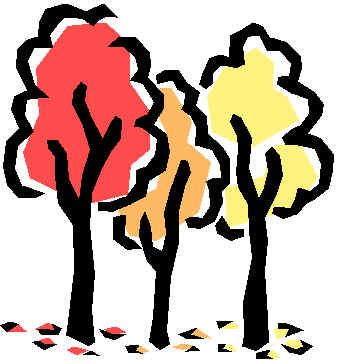Biodiversity and Conservation

by Dr Barbara Corker
What is Biodiversity? Biodiversity is a modern term which simply means " the variety of life on earth". This variety can be measured on several different levels.Genetic - variation between individuals of the same species. This includes genetic variation between individuals in a single population , as well as variations between different populations of the same species. Genetic differences can now be measured using increasingly sophisticated techniques. These differences are the raw material of evolution. Species - species diversity is the variety of species in a given region or area. This can either be determined by counting the number of different species present, or by determining taxonomic diversity. Taxonomic diversity is more precise and considers the relationship of species to each other. It can be measured by counting the number of different taxa (the main categories of classification) present. For example, a pond containing three species of snails and two fish, is more diverse than a pond containing five species of snails, even though they both contain the same number of species. High species biodiversity is not always necessarily a good thing. For example, a habitat may have high species biodiversity because many common and widespread species are invading it at the expense of species restricted to that habitat. Ecosystem - Communities of plants and animals, together with the physical characteristics of their environment (e.g. geology, soil and climate) interlink together as an ecological system, or 'ecosystem'. Ecosystem diversity is more difficult to measure because there are rarely clear boundaries between different ecosystems and they grade into one another. However, if consistent criteria are chosen to define the limits of an ecosystem, then their number and distribution can also be measured. |
How many species are there? |
 Estimates of global species diversity vary enormously because it is
so difficult to guess how many species there may be in less well explored habitats such as
untouched rain forest. Rain forest areas which have been sampled have shown such amazing
biodiversity (nineteen trees sampled in Panama were found to contain 1,200 different
beetle species alone!) that the mind boggles over how many species there might remain to
be discovered in unexplored rain forest areas and microhabitats. Estimates of global species diversity vary enormously because it is
so difficult to guess how many species there may be in less well explored habitats such as
untouched rain forest. Rain forest areas which have been sampled have shown such amazing
biodiversity (nineteen trees sampled in Panama were found to contain 1,200 different
beetle species alone!) that the mind boggles over how many species there might remain to
be discovered in unexplored rain forest areas and microhabitats.Global species estimates range from 2 million to 100 million species. Ten million is probably nearer the mark. Only 1.4 million species have been named. Of these, approximately 250,000 are plants and 750,000 are insects. New species are continually being discovered every year. The number of species present in little-known ecosystems such as the soil beneath our feet and the deep sea can only be guessed at. It has been estimated that the deep sea floor may contain as many as a million undescribed new species. To put it simply, we really have absolutely no idea how many species there are! |
The loss of species in tropical ecosystems such as the rain forests, is extremely well-publicised and of great concern. However, equally worrying is the loss of habitat and species closer to home in Britain. This is arguably on a comparable scale, given the much smaller area involved. Predictions and estimates of future species losses abound. One such estimate calculates that a quarter of all species on earth are likely to be extinct, or on the way to extinction within 30 years. Another predicts that within 100 years, three quarters of all species will either be extinct, or in populations so small that they can be described as "the living dead". It must be emphasised that these are only predictions. Most predictions are based on computer models and as such, need to be taken with a very generous pinch of salt. For a start, we really have no idea how many species there are on which to base our initial premise. There are also so many variables involved that it is almost impossible to predict what will happen with any degree of accuracy. Some species actually benefit from human activities, while many others are adversely affected. Nevertheless, it is indisputable that if the human population continues to soar, then the ever increasing competition with wildlife for space and resources will ensure that habitats and their constituent species will lose out. It is difficult to appreciate the scale of human population increases over the last two centuries. Despite the horrendous combined mortality rates of two World Wars, Hitler, Stalin, major flu pandemics and Aids, there has been no dampening effect on rising population levels. In 1950, the world population was 2.4 billion. Just over 50 years later, the world population has almost tripled, reaching 6.5 billion. In the UK alone, the population increases by the equivalent of a new city every year. Corresponding demands for a higher standard of living for all, further exacerbates the problem. It has been estimated that if everyone in the world lived at the UK standard of living (and why should people elsewhere be denied this right) then we would either need another three worlds to supply the necessary resources or alternatively, would need to reduce the world population to 2 billion. The only possible conclusion is that unless human populations are substantially reduced, it is inevitable that biodiversity will suffer further major losses. Some species are more vulnerable to extinction than others. These include:
Loss of an individual species can have various different effects on the remaining species in an ecosystem. These effects depend upon the how important the species is in the ecosystem. Some species can be removed without apparent effect, while removal of others may have enormous effects on the remaining species. Species such as these are termed "keystone" species. |
Ecological ReasonsIndividual species and ecosystems have
evolved over millions of years into a complex interdependence. This can be viewed as being
akin to a vast jigsaw puzzle of inter-locking pieces. If you remove enough of the key
pieces on which the framework is based then the whole picture may be in danger of
collapsing. We have no idea how many key 'pieces' we can afford to lose before this might
happen, nor even in many cases, which are the key pieces. The ecological arguments for
conserving biodiversity are therefore based on the premise that we need to preserve
biodiversity in order to maintain our own life support systems.
|
| Average global temperatures have been showing a steadily increasing trend.
Snow and ice cover have decreased, deep ocean temperatures have increased and global sea
levels have risen by 100 - 200 mm over the last century. If current trends continue,
scientists predict that the earth could be on average 1oC
warmer by 2025 and 3oC warmer by 2100. These changes, while small, could have
drastic effects. As an example, average temperatures in the last Ice Age were only 5oC
colder than current temperatures. Rising sea levels which could drown many of our major cities,
extreme weather conditions resulting in drought, flooding and hurricanes, together with
changes in the distribution of disease-bearing organisms are all predicted effects of
climate change.
Forests also affect rainfall patterns through
transpiration losses and protect the watershed of vast areas. Deforestation therefore
results in local changes in the amount and distribution of rainfall. It often also results
in erosion and loss of soil and often to flooding. Devastating flooding in many regions of
China over the past few years has been largely attributed to deforestation.
These are only some of the ecological effects of
deforestation. The effects described translate directly into economic effects on human
populations.
Economic Reasons
Environmental disasters such as floods, forest fires
and hurricanes indirectly or directly caused by human activities, all have dire economic
consequences for the regions afflicted. Clean-up bills can run into the billions, not to
mention the toll of human misery involved. Susceptible regions are often also in the
less-developed and poorer nations to begin with. Erosion and desertification, often as a
result of deforestation, reduce the ability of people to grow crops and to feed
themselves. This leads to economic dependence on other nations.
Non-sustainable extraction of resources (e.g.
hardwood timber) will eventually lead to the collapse of the industry involved, with all
the attendant economic losses. It should be noted that even if 'sustainable' methods are
used, for example when harvested forest areas are replanted, these areas are in no way an
ecological substitute for the established habitats which they have replaced.
Large-scale h abitat and biodiversity losses mean that species with potentially great economic importance may become extinct before they are even discovered. The vast, largely untapped resource of medicines and useful chemicals contained in wild species may disappear forever. The wealth of species contained in tropical rain forests may harbour untold numbers of chemically or medically useful species. Many marine species defend themselves chemically and this also represents a rich potential source of new economically important medicines. Additionally, the wild relatives of our cultivated crop plants provide an invaluable reservoir of genetic material to aid in the production of new varieties of crops. If all these are lost, then our crop plants also become more vulnerable to extinction.There is an ecological caveat here of course. Whenever a wild species is proved to be economically or socially useful, this automatically translates into further loss of natural habitat. This arises either through large-scale cultivation of the species concerned or its industrial production/ harvesting. Both require space, inevitably provided at the expense of natural habitats. Perhaps the rain forests and the seas should be allowed to keep their secrets. Ethical Reasons Do we have the right to decide which species should survive and which should die out?Do we have the right to cause a mass extinction? Most people would instinctively answer 'No!'. However, we have to realise that most biodiversity losses are now arising as a result of natural competition between humans and all other species for limited space and resources. If we want the luxury of ethics, we need to reduce our populations. Aesthetic Reasons
Human well-being is inextricably linked to the natural world. In the western world, huge numbers of people confined to large urban areas derive great pleasure from visiting the countryside. The ability to do so is regarded not so much as a need, but as a right. National governments must therefore juggle the conflicting requirements for more housing, industry and higher standards of living with demands for countryside for recreational purposes. |
Copyright 2003 Dr Barbara Corker


